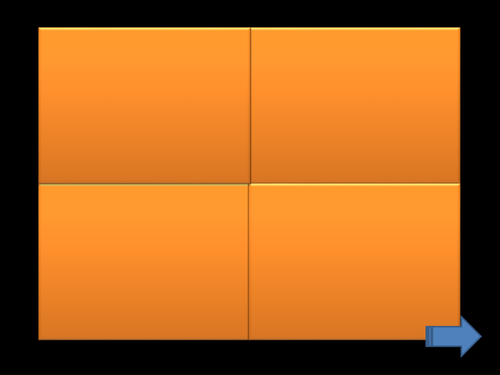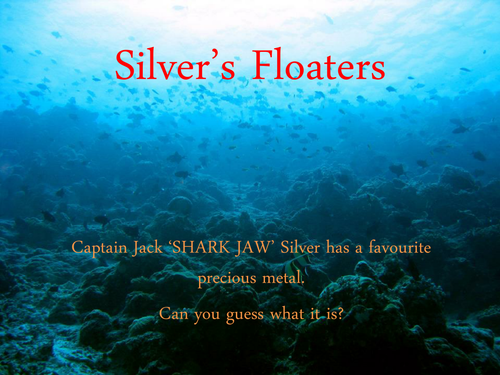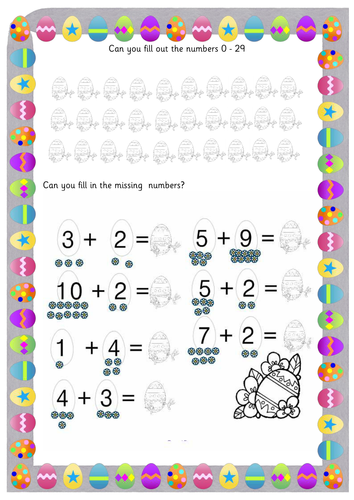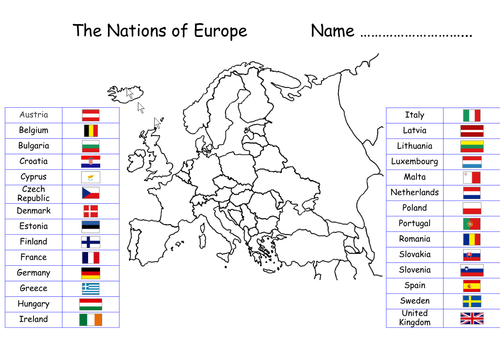32Uploads
20k+Views
2k+Downloads
All resources

Inside the machine - Identify and label the parts of digital devices - Computing Unplugged
New and Updated for 2024
Resources Added:
Labeling activites for many modern devices including, Laptops, Desktops, iPads, iPhone, Smart Watches, Consoles (PS1, PS5 and Nintendo Switch), Controllers, VR Headset and Magic Mouse.
Keyword activities for learning, discussion and recall
Presentation to introduce main common components and what they do
Crossword and Word Search review resources
Write your own clue opportunities for Crossword Puzzles
Students are invited to look at the parts of modern digital devices and identify and name the main components they find plus discuss the similarities and differences inside evolving technology design.
**Components identified include **
Battery/Power supplies, Input devices (keyboard/Mouse/Pen), RAM, Storage (HDD/SSD), Motherboard (CPU/ GPU), Casing, Heat Sinks, Fans, Sensors, Ports, and more
How to use these resources
Each type of activity plays a crucial role in reinforcing understanding and retention of the keywords.
Whole Class Learning
Introduce each component and its function using the presentation provided. Encourage students to ask questions and relate the components to devices they use.
Show-and-Tell:
Use real-life components like a RAM card, hard drive, or a dismantled old computer or tablet. This hands-on view will help cement their understanding of where these components might be found and their physical appearance.
Matching Games: Students match component names with their functions and pictures displayed on the board. This can be done using sticky notes or digital drag-and-drop tools if using interactive whiteboard software.
Paired Work
Flashcard Creation:
Children create flashcards for each component to encourage discussion and deeper understanding.
Role-Play and guessing games: Pairs of students can choose a component and prepare a short role-play that explains their component’s function.
For example, one student could be the CPU and another could be the RAM, demonstrating how they interact within the device.
Quiz Each Other/20 Questions: Students can quiz each other trying to guess/find out the correct component.
Solo Recall
Labeling Exercise: All students try to label the parts using the keywords they have learned.
Crossword Puzzle: Create crosswords and the clues based on the functions of each component to help remember the terminology and functions.
Short Answer Quiz: Conduct a short quiz where students write the function of each component. This can help teachers assess individual understanding and retention of the keywords.
Make their own presentation about the 5 most important components in a digital device - ie - HDD, CPU, GPU, RAM and Sound Card.

Beebot prompt and activity resource - directions, control algorithm, computational thinking
Two activity sheets with Bee bot image, control breakdown and challenge space for independent learning.
1 - Sheet with instructions for use and control of Bee bot and a series of developing challenges for children to try.
2 - Sheet with the instructions then space for students or teacher to record their algorithm (instructions) so they can share/compare/hand in their solutions to a variety of challenges set out by the teacher.

Guided Reading - About the setting
Differentiated activity sheet for students to describe the setting.
Lined area for writing and boxes for drawing or text. Editable instruction box at the bottom.
Literacy, Guided Reading, Setting, AF6, AF2, Describing a setting, location, story

Hidden letters activity for the IWB or class computer - Phonics Phase 2-5
Each slide has a letter/grapheme hidden behind four panels which dissolve when they are clicked on.
Can be displayed on IWB for group activity or Desktop/Laptop for more independent learning
The graphemes are in UK phonics phase order.
Phase 2 - s, a, t, p, i, n, m, d, g,o,c,k, ck,e,u,r, h, b, f, ff, l, ll, ss
Phase 3 - j, v, w, x, y, z, zz, qu, ch, sh ,th , ng, ai ee, oa, oo, ar, or, ur, ow, oi, er, igh, ear, air, ure
Phase 4 - st, nd, mp, nt, nk, ft, sk, lt, lp, lf, lk, pt, xt, tr, dr, gr, cr, br, fr, bl, fl, gl, pl, cl
Phase 5 - ay, ou, ie, ea, oy, ir, ue, aw, ew, oe, au, ey, wh, ph, a-e, e-e, i-e, o-e, u-e
Slides can be easily rearranged to extend challenge and reuse resource as a game/team quiz/ starter or independent activity.
Children begin to predict while only seeing 1/4 of the grapheme thus truly embedding their grapheme recognition and speed recall.
Great fun way to learn with young readers.

Science lesson on floating and sinking
Captain Silver has a problem.
He has to move his treasure but can only build his boat out of silver foil. How much treasure can he safely transport and what is the best design for his boat?
Each student is given a set amount of aluminium foil and a short time to build a boar for Captain Silver. They are asked to predict how much it will hold and test their prediction. The class then reflect on the best designs and make some conclusions as to the best ideas for Captain Silvers challenge.
You will need - Aluminium, Unifix cubes (or similar), a large tank of water/bath/sink.

More or Less (PowerPoint) activity for Early Maths (Beans/Plants and Eggs/Chicks)
Slides have (1-10) Beans or Eggs on one side the children are asked to count them then predict how many Plants or Chicks will appear. They are then asked to decide if this is more or less.
Slides get progressively harder mostly under 10 but some stretch the children to count to 20 near the end.
Beans - 12 slides - Each slide reveals the seeds which did not grow after children count.
Eggs - 13 slides
This activity was designed for a Reception class who were learning about life cycles, growing beans and hatching chicks, in the spring term.
(Easily adaptable to simplify or extend as needed for your students)

Animal Hangman game - SMART Notebook
14 slides to be used as prompts for a spelling game.
Children asked to guess letters. CT or students can then can write them where they think they go in the spaces provided. If the letter is incorrect then the CT draws one part of the drawing (head, body, arms. legs). Children need to spell word correctly before the CT draws the Hangman image.
#Farm animals #Spelling #phonics #Handwriting

Punctuation Graph
Students read their reading book and then tally/count up the number of times they see punctuation (. , "" ABC).
Very good for Guided Reading and editable if you want to add other punctuation : ; () ?!

Animals - Design your own animal
A4 & A3 activity for children to design and label their own animal.
Prompt words given in boarder to help imagination.
tusk, trunk, tail, foot, shell, beak, head, horn, ear, arm, fingers, nose, hands

Minecraft Phonics - a-z
Minecraft - you may have heard of it, it's "a thing".
Here is the first set of Minecraft phonics. Letters a-z and a corresponding minecraft term to accompany them.
Images and words which will excite your students while still helping them learn the phonetic sounds and formation of all 26 letters.
a - apple, b - bricks, c - cake, d - door, e - enchantment table, f - furnace
g - glow stone, h - hopper, i - iron bars, j - jack o'Lantern, k - kitten, l - lever
m - minecart, n - nether portal, o - obsidian, p - piston, q - quartz stairs
r - redstone torch, s - sign, t - tripwire, u - update, v- vines, w - water, x - xbox, y - yellow wool, z - zombie pigman!
Fully editable for you to adapt and fit to your students!

Easter Maths - under 20
Two maths worksheets for reception/Y1 students to count on and add single digits.
Introduction - Children asked to write numbers (0-29) into three rows of eggs.
Challenge 1 - Children asked to add single digits with counter markers to help them count on. Totals all between 5-15.
Challenge 2 - Children asked to fill in missing numbers in simple sums i.e. 3 + ? = 5

Maps with labels, Continents, Oceans, European Union and UK
Three maps with labels for students to attach.
Map 1 - World map with continents and ocean labels to link.
Atlantic, Arctic Pacific, Indian, Southern
Antarctic, North America, South America, Africa, Australasia, Europe, Asia
Map 2 - European map with all EU countries and their flags to link.
Austria, Belgium, Bulgaria, Croatia, Republic of Cyprus, Czech Republic, Denmark, Estonia, Finland, France, Germany, Greece, Hungary, Ireland, Italy, Latvia, Lithuania, Luxembourg, Malta, Netherlands, Poland, Portugal, Romania, Slovakia, Slovenia, Spain, Sweden and the UK.
Map 3 - United Kingdom map with four nations, flags and names to link.
Scotland, England, Wales and Northern Ireland.

Hidden numbers Power point for young Early Maths - Foundation Stage, KS1
Slides 1-20 with the digits covered by four panels - each one dissolves when clicked on. Children can learn interactively with the IWB taking turns to remove panels and trying to guess what number/digits are hiding underneath.
Slides can be reordered to make game reusable and allow for repeated independent learning.
Skills
Problem Solving, Number Sequencing, Counting, Teamwork, Predicting, Number recognition and group play.

Labelling the Body - Boy and Girl - Science
Activity sheet with a drawn body in the centre.
Labels for the upper, lower body and face provided. Students can cut and stick or link up with lines.
Great to photocopy onto A3 to increase the image size.
Individual, paired or group activity!

Minecraft Phonics Video - a-z
Minecraft - if you can't beat them, join them.
A short video with letters a-z and a phonetic Minecraft word to help children learn them.
Images and words which will excite your students while still helping them learn the phonetic sounds and formation of all 26 letters.
a - apple, b - bricks, c - cake, d - door, e - enchantment table, f - furnace
g - glow stone, h - hopper, i - iron bars, j - jack o'Lantern, k - kitten, l - lever
m - minecart, n - nether portal, o - obsidian, p - piston, q - quartz stairs
r - redstone torch, s - sign, t - tripwire, u - update, v- vines, w - water, x - xbox, y - yellow wool, z - zombie pigman!

Minecraft Phonics Flashcards - a-z
Minecraft - you may have heard of it, it's "a thing".
This set of Minecraft phonics flashcards has letters a-z each with a corresponding Minecraft term.
Images and words which will excite your students while still helping them learn the phonetic sounds and formation of all 26 letters.
a - apple, b - bricks, c - cake, d - door, e - enchantment table, f - furnace
g - glow stone, h - hopper, i - iron bars, j - jack o'Lantern, k - kitten, l - lever
m - minecart, n - nether portal, o - obsidian, p - piston, q - quartz stairs
r - redstone torch, s - sign, t - tripwire, u - update, v- vines, w - water, x - xbox, y - yellow wool, z - zombie pigman!

Maps of UK and Europe with flags and labels to connect
Line maps of the UK and Europe together with the country names and flags to connect.
Students can either label with lines or cut and stick labels into the correct nations.
Print/ photocopy onto A3 for a larger map.

Minecraft Phonics Posters/flashcards - editable
Minecraft - you may have heard of it, it's "a thing".
Minecraft phonics. Letters a-z and a corresponding Minecraft term to accompany them.
Images and words which will excite your students while still helping them learn the phonetic sounds and formation of all 26 letters.
a - apple, b - bricks, c - cake, d - door, e - enchantment table, f - furnace
g - glow stone, h - hopper, i - iron bars, j - jack o'Lantern, k - kitten, l - lever
m - minecart, n - nether portal, o - obsidian, p - piston, q - quartz stairs
r - redstone torch, s - sign, t - tripwire, u - update, v- vines, w - water, x - xbox, y - yellow wool, z - zombie pigman!
Fully editable for you to adapt and fit to your students!

Scratch Jr - Classroom decorations
Banner and bunting showing the Scratch Jr blocks and icons.
Grouped by category and great as an additional teaching resource or as decoration as part of a IT storage space, coding area or classroom display.
ScratchJr serves as a beginner’s coding language, empowering children between the ages of 5 and 7 to craft their own captivating stories and animations. By simply connecting graphical programming blocks, kids can bring characters to life, making them move, speak, dance, and interact. With the paint editor, children can customize characters, incorporating their unique voices, sounds, and even personal photos. The programming blocks serve as the magic wand, enabling children to animate their characters and unleash their imagination.
ScratchJr is available free from the Apple and Android stores,
(https://www.scratchjr.org/)
plus on desktops using this site (https://jfo8000.github.io/ScratchJr-Desktop/)
Great starter projects can be found here to help students learn what the blocks can do (https://www.scratchjr.org/teach/activities)

Scratch Jr - Coding Sequences and Explanation Activities
These differentiated Scratch Jr sequence sheets challenge children to convert from block commands to pseudo code and back again. Explaining what a command will do and in turn how a sequence (algorithm) works, step by step, is a great way to build fluency and confidence in computational thinking. Reordering commands into the correct sequence builds a greater understanding of the way algorithms work and logical thinking skills.
Prepared on A4 sheets and with various challenges (Sequencing, writing pseudo code, drawing what happens in order, completing cloze missing word challenges and describing the commands) Scratch Jr projects on paper before building them with the device.
Decomposition - the task of breaking something down into small steps is a key skill when learning to use code and solve problems. These activites to make this into a fun and enjoyable experience for young learners who can then test the scripts on the App to see what they do. This reflective process can really open up quality discussions and opportunities for children to explain their thinking.
ScratchJr serves as a beginner’s coding language, empowering children between the ages of 5 and 7 to craft their own captivating stories and animations. By simply connecting graphical programming blocks, kids can bring characters to life, making them move, speak, dance, and interact. With the paint editor, children can customize characters, incorporating their unique voices, sounds, and even personal photos. The programming blocks serve as the magic wand, enabling children to animate their characters and unleash their imagination.
ScratchJr is available free from the Apple and Android stores,plus on desktops using the GitHub site.
Great starter projects can be found by searching for ScrathJr’s own site too, to help students learn what the blocks can do.




















